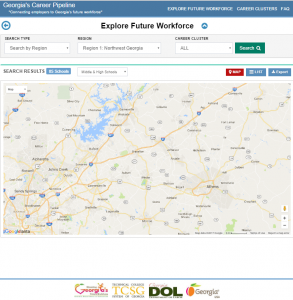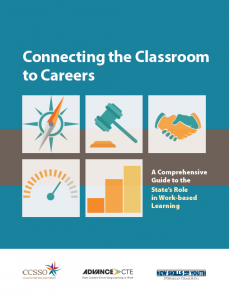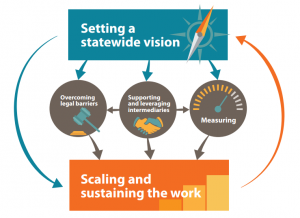We have compiled a list of highlights in Career Technical Education (CTE) from this week to share with you.
WEBINAR OF THE WEEK
This week, Advance CTE hosted a webinar providing a preview of the 2020 elections at both the national and state level and discussed how the results of the elections may impact policy overall, and specifically CTE-related policy. Panelists also discussed what state CTE leaders can do now to prepare for the elections in November. View the recording of the webinar and register for the next one: CTE’s Role in the Future of Work and our Economic Recovery.
SCHOLARSHIP AWARD OF THE WEEK
Meet Haley, our grand prize scholarship winner! We're honored to be able to support the next generation of women in auto care. She was awarded a $5,000 scholarship and trip to AAPEX 2020 this fall, and is currently a student at Northwood University. pic.twitter.com/IAgMqs8lgl
— Women in Auto Care (@WomenInAutoCare) July 27, 2020
GRANT AWARD OF THE WEEK
The Rethink K-12 Education Models Grant will support states’ initiatives in creating innovative ways for learners to continue education in ways that meet their individual needs. States receiving the grant award include: Georgia, Iowa, Louisiana, Maine, North Carolina, New York, Rhode Island, South Carolina, South Dakota, Tennessee and Texas. The awards range from $6 million to $20 million. View the press release here.
CTE PROGRAM OF THE WEEK
One local CTE program in Michigan has added a new teacher academy for their learners, which will begin this fall! With the help of a grant award from the Michigan Department of Education, Alpena Public Schools are looking to recruit their own educators for the future of their district. Read more in this article published by The Alpena News.
TOOLKIT OF THE WEEK
To assist state leaders in developing and expanding equitable youth apprenticeship programs, the National Alliance for Partnerships in Equity (NAPE) and the Partnership to Advance Youth Apprenticeship (PAYA) has developed a new toolkit, Equity in Youth Apprenticeship Programs.
This toolkit strives to increase access and opportunities for high school students as they begin to transition into the workforce or a postsecondary institution. Read more here.
RESOURCE OF THE WEEK
Advance CTE in partnership with The National Center for Learning Disabilities (NCLD) has published a new resource as part of the Making Good on the Promise series, which outlines the five steps state CTE leaders can take to ensure secondary and postsecondary students with disabilities have access to and the supports needed to thrive in high-quality CTE programs.
View the resource in our Learning that Works Resource Center.
Brittany Cannady, Digital Media Associate


 By now the consensus in the education community is clear: in addition to a strong academic foundation, students should be able to access other experiences in high school — physical education, the arts, Career Technical Education (CTE) — that provide added value to their education and increase the likelihood of postsecondary success.
By now the consensus in the education community is clear: in addition to a strong academic foundation, students should be able to access other experiences in high school — physical education, the arts, Career Technical Education (CTE) — that provide added value to their education and increase the likelihood of postsecondary success. 
 Another state that is using Title IV funds to boost career readiness is
Another state that is using Title IV funds to boost career readiness is  Earlier this summer, Advance CTE in partnership with Education Strategy Group (ESG) and the Council of Chief State School Officers (CCSSO), released
Earlier this summer, Advance CTE in partnership with Education Strategy Group (ESG) and the Council of Chief State School Officers (CCSSO), released  About Georgia: Georgia CTE is delivered through a combination of comprehensive high schools, charter schools and technical colleges. CTE students in the state are active and high achievers. More than
About Georgia: Georgia CTE is delivered through a combination of comprehensive high schools, charter schools and technical colleges. CTE students in the state are active and high achievers. More than  In January 2017, Georgia’s partnership with business and industry leaders culminated in the launch of the
In January 2017, Georgia’s partnership with business and industry leaders culminated in the launch of the 
 Once a statewide vision is in place and early implementation has begun, state policymakers should consider how to measure and scale work-based learning. There are two common approaches states take to building a comprehensive measurement and data-collection system: a systems-level approach that examines and evaluates the quality of the program, and a student-level approach that measures student learning and skill attainment. Through its
Once a statewide vision is in place and early implementation has begun, state policymakers should consider how to measure and scale work-based learning. There are two common approaches states take to building a comprehensive measurement and data-collection system: a systems-level approach that examines and evaluates the quality of the program, and a student-level approach that measures student learning and skill attainment. Through its